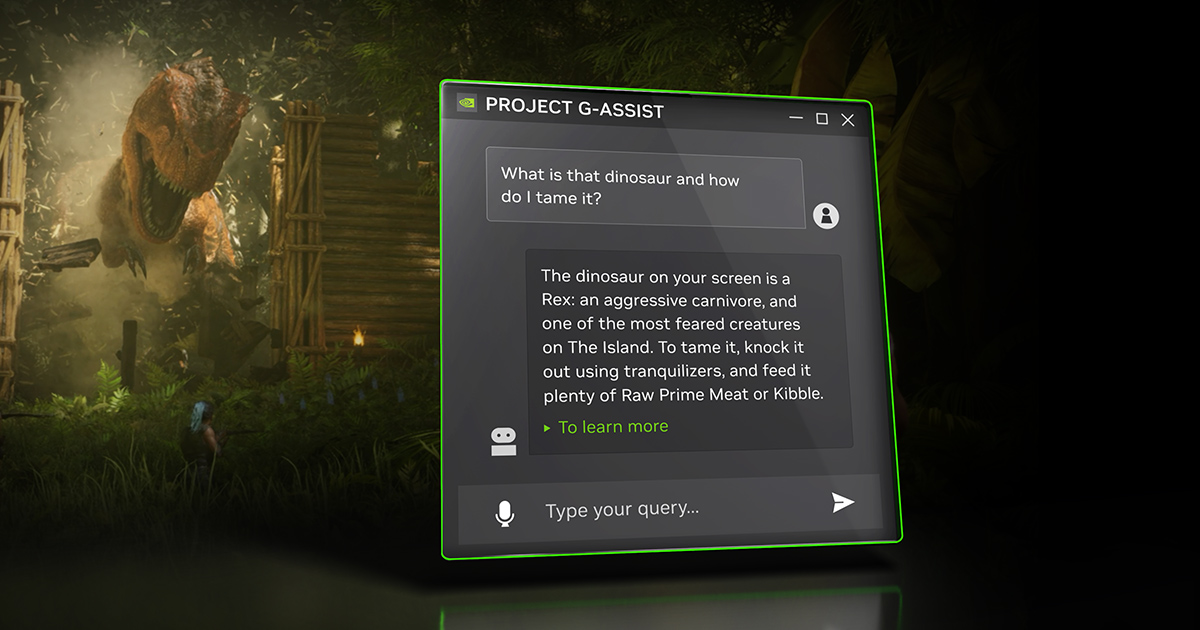
An idea that started as an April Fools' joke eight years back is now a reality, thanks to recent strides in the field of AI. Meet Project G-Assist, finally available with the latest Nvidia App version 11.0.3.218. Nvidia also introduced custom DLSS Super Resolution scaling factors, allowing users to override the default options with granularity ranging from 33% to 100%. Several settings from the original Nvidia Control Panel also appear in the App, aiming to transform it into a complete replacement.
G-Assist still isn't as robust and sophisticated as its originally teased version that was advertised with the ability to single-handedly take down the Nameless King from Dark Souls. AI simply isn't that capable yet, nor would most people want that. Instead, Nvidia says G-Assist is an AI focused on providing in-game tuning, advice, and help.
Under the hood, it uses a third-party SLM (Small Language Model) that's trained to carry out a specific set of tasks. These tasks are generally associated with optimizing performance, answering questions related to your PC's hardware, and controlling lighting and fan speeds on select peripherals. Certain games will also have integrated custom support that can provide specific help (i.e. the above Ark: Survival Evolved image).
You can get G-Assist up and running as long as you have an Nvidia RTX 30/40/50 series GPU that features 12GB of VRAM or higher. Unfortunately, that leaves behind many entry-level and mid-range GPUs like the RTX 3060 Ti, RTX 3070, RTX 4060 Ti 8GB, and possibly even the upcoming RTX 5060 and RTX 5060 Ti. You'll also need around 6.5GB and 3GB of free space for G-Assist's System Assistant and Voice Command modules, respectively.
Following the Nvidia Blackwell RTX 50-series GPU launch, Nvidia rolled out an update to the Nvidia App that added a new DLSS Override section. The DLSS Override Super Resolution setting allowed users to enable scaling from DLAA (100% input resolution) to DLSS Ultra Performance (33% input resolution) presets at the driver level, when Super Resolution is turned on in-game.
Today, with the new update, instead of the hardcoded presets, you can adjust the input resolution to your liking between 33% and 100%. This can be particularly helpful in cases where you need additional tuning. For example, you might want to use 60% scaling, because the quality preset (67%) might be too demanding, while the performance preset (50%) is too blurry.
Lastly, two important features once only found in the Nvidia Control Panel have made their way to the Nvidia App: Display Scaling and Display Color. The former allows you to override scaling in games/apps, using hardware-accelerated integer scaling, while the latter is used to tweak your display's color settings. You can download the latest version of the Nvidia App from the official website or update it directly from within the Nvidai App if you're already using it.







